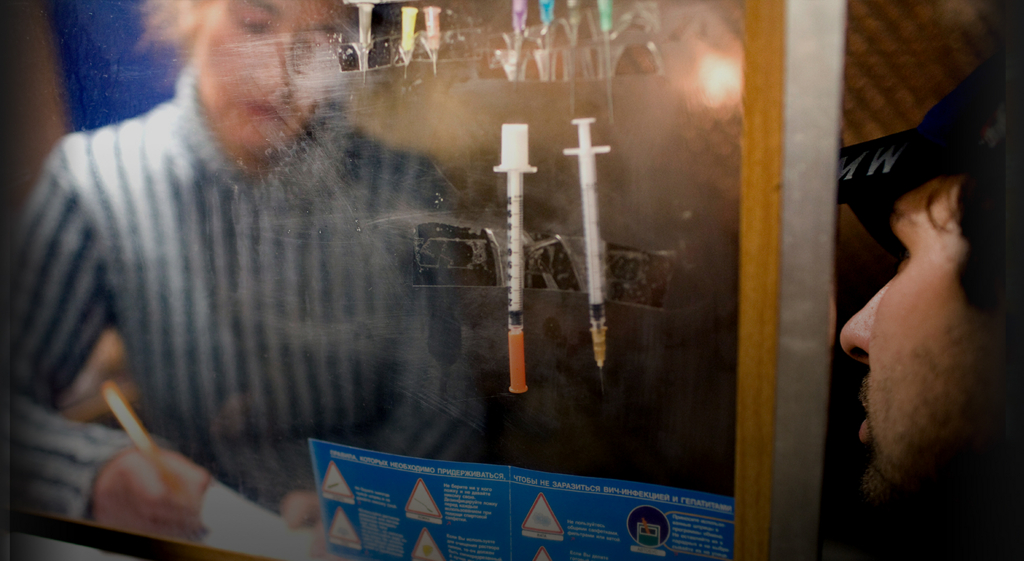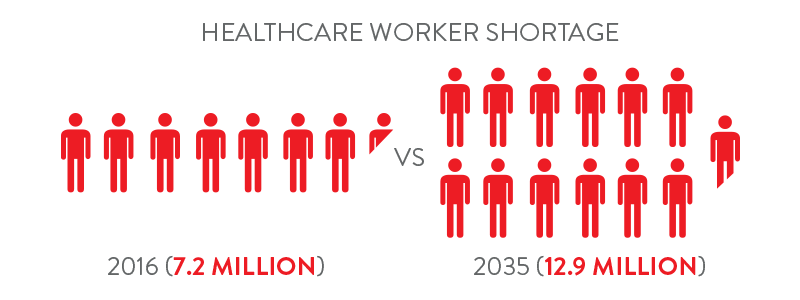国際エイズ学会(IAS)の公式サイトに掲載されている2017年年次書簡『力強い科学 果敢なアクティビズム』の続き(3回目)です。「いまここで予防対策への資投入をためらっていたら、あとで大きなツケを払うことになりますよ」ということは前々から指摘されてきましたが、ここでは数字を示しながら重ねて強調しています。
『HIVは終わっていないということ、そしていま撤退したのではこれまでの成果をすべて失い、すでに投じられている巨額の資金も無駄になってしまう』
さんざん「エイズ流行終結」などと吹きまくっているからこういうことになっちゃうんだぞ! だれだって「エイズはもういいだろう」と思いたくなっちゃうよ!と、 私などはこの際、感嘆符をさらに3つくらいつけて言いたい気分ではありますが、ここは感情に走ることなく、IASの説明を聞きましょう。
『欧州各国政府の多くは、他の資金需要を優先させるために、国際保健と開発への支出を縮小しています。エイズ資金の最大の供給源となってきた米国でも、赤字削減などいくつかの要因により、国際的なHIV対策への資金が大きく減ってしまう可能性があります。こうした困難の克服には、しっかりと計算したアドボカシーを続ける必要があるのです』
残念ながら日本への言及はありませんが、国内のエイズ対策の現状を鑑みると、社会的に「エイズはもういいだろう」感覚はますます広がっている印象です。
『資金配分の基準は国境ではなく、人であるべきです』
この指摘も重要です。中所得国に関する言及ですが、日本国内でも一定程度あてはまるのではないでしょうか。現在進行中のエイズ予防指針見直しの議論をフォローしていくと、そんな印象も強く受けます。

『いま資金を投入すれば将来負担は軽減』
http://www.iasociety.org/Annual-Letter-2017
UNAIDSの推計によると、効果的なエイズ対策を実施するには2020年時点で少なくとも年間262億ドルが必要になります(注5)。2015年のHIV投資総額は190億ドルでした。エイズ資金は過去3年間、実質的に増えていない状態で、これまでの成果を持続できるかどうか、懸念されています(注1)。HIVの新規感染とエイズ関連の死亡をさらに減らしていくための必要額には遠く及びません。

図 UNAIDS資金推計 2020年には年間262億ドル必要
不可欠な資金を確保するための新たな財源の開拓が、私たちのコミュニティの大きな課題です。持続可能な開発目標(SDGs)に200項目近いターゲットが盛り込まれていることで分かるように、国際保健と開発にむけた優先課題は増え続けています。新たなエイズ資金を求め、そこに投資することが、いかに多くの開発課題の改善に役立つか。それを示せるような敏捷かつ着実なアドボカシーが必要なのです。
エイズ対策を支えてきたのは、科学者、クライアント、保健医療従事者、コミュニティメンバーによるアクティビズムです。しかし、資金拠出国では、資金の増額を促す力になってきた草の根のエネルギーが失われようとしています。この流行がもたらす健康の脅威から次の世代を救うには、基本に立ち返る必要があります。HIVは終わっていないということ、そしていま撤退したのではこれまでの成果をすべて失い、すでに投じられている巨額の資金も無駄になってしまうことを政策決定者に再確認させるために、緊急の行動を一致して取りましょう。
安定的で持続可能な資金のための財源の強化
この数年、HIV予防と治療のプログラムをまかなうための最も頼りになる財源はグローバルファンドと米大統領エイズ救済緊急計画(PEPFAR)でした。HIVの医科学研究には米国立衛生研究所(NIH)、ビル&メリンダ・ゲイツ財団などが大きく寄与しています。こうした財源力のさらなる強化が、エイズ対策を前進させていくための軸になります。2016年には、グローバルファンドの今年から3年間の資金補充誓約が目標額に達し、近い将来の資金を担える見通しになりました。
したがって、エイズ資金の供給源はしかりしているように見えるとはいえ、確実に調達できるかどうかという点では危うさも残っています。欧州各国政府の多くは、他の資金需要を優先させるために、国際保健と開発への支出を縮小しています。エイズ資金の最大の供給源となってきた米国でも、赤字削減などいくつかの要因により、国際的なHIV対策への資金が大きく減ってしまう可能性があります。こうした困難の克服には、しっかりと計算したアドボカシーを続ける必要があるのです。
さらに国民所得のみで、援助資格を判断する考え方にも反対しなければなりません。HIVの影響が甚大なキーポピュレーションの人びとの多くは、中所得国に住んでいます。HIV関連のキーポピュレーションのニーズに対応している中所得国もありますが、多くはありません。資金配分の基準は国境ではなく、人であるべきです。
国内のエイズ投資の拡大
エイズ支出の総額はここ2。3年、下降気味ですが、HIV予防、ケア、治療プログラムに公的資金を投入する国は次第に増え、エイズ対策への国内資金は増加しています。もちろん、国内資金の増加は歓迎すべき傾向ですが、ほとんどの国の支出額はなお、あまりにも少なく、とりわけ一次予防に向けられる資金は少額であることも認識しておかなければなりません。
挿入コメント
「抗レトロウイルス治療普及の努力は高く評価しています。しかし、第3選択薬の組み合わせによる治療は依然として受けることができません。すでに第2選択薬の組み合わせでは治療できない患者がいるので、これは急務です。ウイルス量のモニタリング費用は以前より下がってはいますが、患者によってはいまなお、高すぎて使えません」
ハーマイン・メリ博士、IAS会員、カメルーンの保健医療従事者
経済力とHIV流行の影響の大きさを勘案すると、ほとんどの国はまだ、エイズ対策に十分な額の公的予算を投入しているとはいえません。商品市場の多くが崩壊した後でも、サハラ以南のアフリカは経済成長を続けています。アフリカおよび世界の政策決定者は、HIV予防、ケア、治療のプログラムを支えるためにこの成長を活用すべきです。こうした投資は労働生産性を高め、将来の医療費支出を抑え、子どもの成長を助けることによって、15倍の経済リターンを生み出すことを認識すべきです(注9)。
いまドナーの資金が減れば、各国が国内支出を増額しようとする意欲も失われ、これまでの投資も無駄になってしまいます。多くの国がここ数年で得られた成果を得られなくなるのです。国内資金を増額させたものの、それだけでは十分に流行の重荷から脱しきれない国にとっては、罰を受けるようなものです。
保健医療人材への投資
エイズ対策において、最も重要な資産は人です。保健システムがHIV陽性者を治療したり、HIVの新規感染を防いだりするわけではありません。人が行うのです。毎日働いている保健医療従事者は、しばしば大きな困難と闘いながら、HIV対策の最前線に立っています。しかし、その努力は十分に報われてはいません。

図 保健医療従事者不足 2016年720万、2035年1290万人
多くの国で保健医療従事者は極端な供給不足にあります。不足する人材はすでに720万人に達し、2035年には1290万人に拡大すると推計されています(注9)。80以上の国で、人口当たり保健医療従事者数はWHO勧告の最低基準を下回っています。
この人材不足を解消するためにできることはすべて行い、同時に現在の保健医療従事者を大事にしなければなりません。しかし、HIV感染とエイズ関連の死亡を減らすことを望みながら、そのために働いてくれる保健医療従事者を失うようなことがあまりにもしばしば、起きています。必要なツールを得られない保健医療従事者がたくさんいます。安い賃金で、しかも厳しい職場環境のもとで働いているのです。研修や教育は不適切で、昇進の機会もほとんどありません。
SPENDING NOW TO AVOID SPENDING MORE LATER
UNAIDS estimates that at least US$26.2 billion will be needed annually by 2020 to implement an optimally effective AIDS response5. In 2015, total HIV investments amounted to US$19.0 billion, and no meaningful increase in total resources for AIDS occurred within the past three years, raising concerns about our ability to sustain the gains we have made1. These trends leave us well short of what we need to drive further progress in reducing new HIV infections and AIDS-related deaths.
図 UNAIDS資金推計
2020年には年間2620億ドル必要
Our community faces important challenges in working to mobilize essential new funding. The range of global health and development priorities is proliferating, as reflected in the nearly 200 targets of the Sustainable Development Goals. It will require nimble, steady advocacy to both make the case for new resources for AIDS and show how these investments improve multiple development priorities.
Activism by scientists, clients, healthcare workers and community members has sustained the AIDS response. But in traditional donor countries, the grassroots energy that helped propel funding increases has dissipated. If we hope to save the next generation from the health threats posed by the epidemic, we must get back to basics, uniting in an urgent effort to remind decision-makers that HIV isn’t over, and that pulling out now risks losing all the gains we have made and effectively wasting the unprecedented resources that have already been spent.
Strengthening sources of predictable and sustainable financing
For several years, the most reliable funding for HIV prevention and treatment programmes has come from the Global Fund and the US President’s Emergency Plan for AIDS Relief (PEPFAR). Funding pillars for HIV scientific research have included the US National Institutes of Health and the Bill & Melinda Gates Foundation. Moving forward, ensuring the continued strength of these funding sources will be pivotal to hopes for major progress on AIDS. The successful three-year replenishment of the Global Fund in 2016 offers encouragement that this essential funding vehicle will remain for the foreseeable future.
However, these seemingly solid sources of AIDS funding also confront potential threats to their viability. Many European governments have curtailed global health and development spending to accommodate new spending for other priorities. And in the US, historically the leading provider of AIDS financing, anticipated deficit reduction efforts and other factors could place sharp downward pressure on funding for the global HIV response. Strong, smart and sustained advocacy will be needed to meet these challenges.
Additionally, we need to push back against the growing notion that national income categories alone should determine eligibility for international support. Many of the key populations most heavily affected by HIV live in middle-income countries. Although some middle-income countries are addressing the HIV-related needs of key populations, many more are not. People, not national borders, should be the touchstone for how AIDS resources are allocated.
Increasing domestic investments in AIDS
Even as overall spending on AIDS has begun to decline over the past two to three years, domestic spending on AIDS has continued to increase as more and more countries are allocating public financing towards HIV prevention, care and treatment programmes. Yet while domestic spending has been a recent bright spot, most countries are still spending far too little, especially on primary prevention.
“We very much appreciate the efforts by the government and other partners to make antiretroviral therapy available throughout our country. However, third-line regimens remain unavailable. We urgently need to make these available, as we already have patients who are failing on second-line regimens. Although viral load monitoring is now less costly than it was, it remains a luxury for some patients.”
Dr. Hermine Meli, IAS Member
Healthcare worker, Cameroon
Analyses indicate most countries have yet to dedicate public sector funds to the AIDS response to a degree that corresponds with their economic potential and national HIV burden. Even following the collapse of many commodity markets, most economies in sub-Saharan Africa continue to expand. Decision-makers in Africa and other parts of the world need to leverage this economic growth to support HIV prevention, care and treatment programmes, recognizing that these investments generate 15:1 economic returns by increasing labour productivity, averting future medical expenses, and improving outcomes for children9.
Reducing donor funding now would further disincentivize countries from increasing their spending, and waste previous investments – leaving many countries unable to sustain or build on the gains made in recent years. It would also punish countries that have increased domestic resources but cannot yet afford the full burden of their epidemic.
Investing in the health workforce
In the AIDS response, people are our most important resource. Health systems do not treat people living with HIV or prevent new HIV infections. People do. The healthcare workers who labour every day – often against considerable challenges – are the front line of our response to HIV, and the response is serving them insufficiently.
図 保健医療従事者不足
2016年720万人vs 2035年1290万人
In many countries, health workers are in extremely short supply. The workforce shortage, already estimated at 7.2 million, is projected to grow to 12.9 million by 203510. In more than 80 countries, the population-level density of health workers falls short of the minimum threshold recommended by WHO.
These shortages mean that we need to do everything possible to support and value the healthcare workers we have. Far too often, though, we fail the healthcare workers on whom we must rely if we hope to drive down new infections and AIDS-related deaths. Too many healthcare workers lack the tools they need, are underpaid, work in challenging environments, receive inadequate continuing education, and have few opportunities to advance in their field.